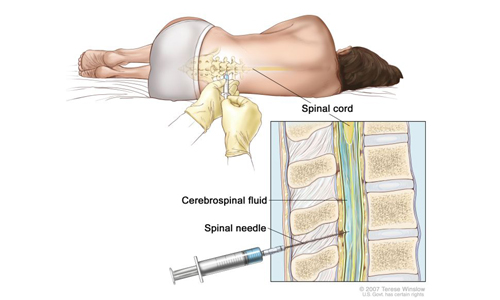Difference between lymphocytic and myelocytic leukemia
Introduction
Leukemia is a cancer affecting the white blood cells of the body. There is excessive, uncontrolled production of abnormal white blood cells in leukemia. There are two variants of leukemia, namely lymphocytic and myelocytic leukemia based on the type of white cells affected. Lymphoid/lymphocytic leukemia affects the white blood cells present in lymph fluid and lymph nodes whereas myeloid leukemia affects cells present in the bone marrow.
Definition:
The term myeloid or myelocytic is given to those leukemias which produce abnormal granulocytes or monocytes, a kind of white blood cell. Leukemias that produce abnormal lymphocytes are called as lymphoid or lymphocytic leukemia.
Difference in Pathology:
Leukemias can be acute (a sudden attack) or chronic (lasting more than 15 days) . Acute myelocytic leukemia is very commonly seen in adults especially in the old age. Lymphocytic leukemia is commonly seen in children and is leukemia affecting type B white cells.
Lymphocytic leukemia is characterized by enlargement of lymph nodes of the body. Lymphocytic leukemia manifests as presence of large numbers of immature forms of lymphocyte white blood cells in the circulation which lack the capacity to fight infection, their prime purpose.
Myelocytic leukemia is often referred to as non-lymphoid for the ease of reference. Myelocytic leukemia is leukemia characterized by abnormality in the granulocytes series of white blood cells i.e. basophils, eosinophils and neutrophils.
Chronic myelocytic leukemia occurs due to the presence of Philadelphia chromosome.
The excessive, immature cells produced in both leukemias essentially start consuming excessive space in the bone marrow leading to reduction in the production of all other cells that are produced there,namely RBCs, platelets, other normal white blood cells. This leads to the characteristic symptoms of leukemia.
Signs and symptoms:
Myelocytic leukemia manifests as intermittent fever along with easy bruising of skin due to low blood platelet counts. The clotting process is hampered due to the low platelet count in the circulation. Another important feature is that there is anemia and easy fatigability seen in the patient due to deficiency of RBCs. Spleen enlargement is common for both the leukemia as there is excessive breakdown of the red blood cells. There is tendency to frequent infections as the immunity is hampered. There are excessive but useless white blood cells flooding the circulation.
Diagnosis:
The symptoms are very remarkable making it easy to diagnose leukemia. The myelogenous as well as the lymphogenous leukemia can be diagnosed by blood tests and bone marrow scans. Some may also offer MRI, X-rays and CT scan. Blood counts show extremely high white blood counts along with low platelets, red blood cells and hemoglobin.
Treatment:
Radiotherapy and chemotherapy are the mainstay of treatment. Lymphoid leukemia has rarely been cured in a patient but there is long survival period achievable with medications today. Myeloid leukemia can achieve remission well and hence patients become disease-free completely from myeloid leukemia.
Medications like prednisolone are given for long term in such patients to prolong life and reduce the remission of disease.
Summary: Myeloid leukemia affects myelogenous white blood cells which are cells originating from the bone marrow. There is excessive, uncontrolled production of these cells produced from the marrow. Lymphoid leukemia is a malignant cancer of lymphogenous cells which are originating from the lymphatic system. Myeloid leukemia is easily cured but lymphoid leukemia can only be controlled by medications and radiation but never fully cured.
- Difference between near sightedness and far sightedness - January 21, 2015
- Difference between Diverticulosis and Diverticulitis - January 20, 2015
- Difference between Prilosec and Nexium - January 19, 2015
Search DifferenceBetween.net :
Leave a Response
References :
[0]http://cancer.osu.edu/NCI/Media/CDR0000503953_full.jpg

